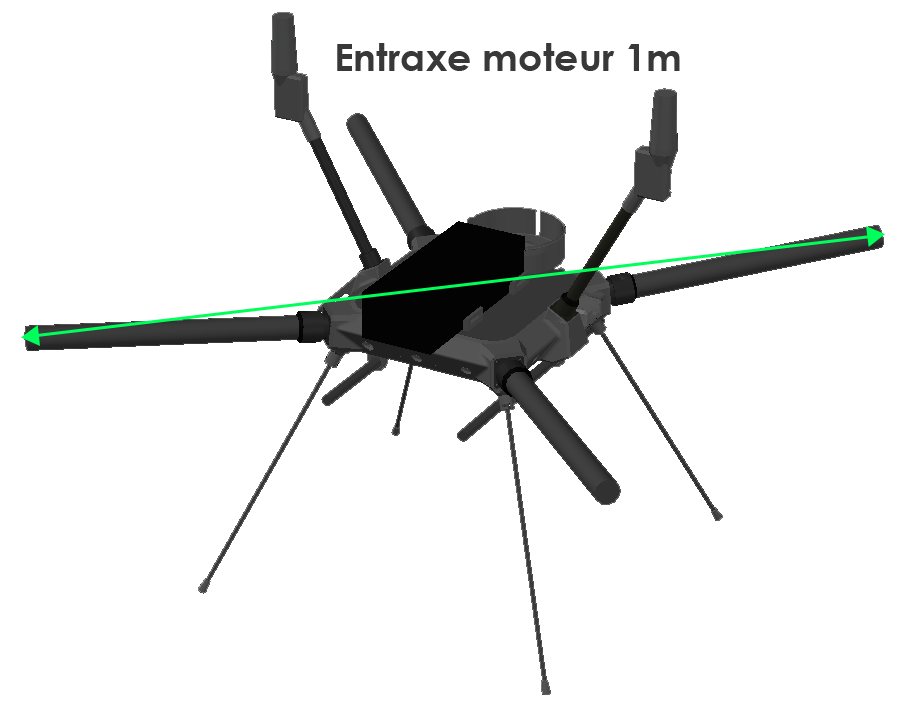The role of ground control in drone surveying

In traditional drone surveying, you need a sufficient amount of known points to verify and pin down your drone imagery to the bottom. For the reason that a drone without kinematic processing capabilities is capturing 2D site imagery.
When a graphic?s position in the sky isn't accurately geotagged, you don?t get reliable positional data from the hardware used to get the imagery alone; that accuracy comes from ground control. The points used to reference positions on the ground are called ground control points (GCPs), and this can be known points marked and measured with base and rover or perhaps a moveable smart ground control point like Propeller?s AeroPoints. In the event that you?re working with known points, a surveyor typically has to physically walk a niche site, shoot the points with a rover, and mark them for visibility.
Not only will be the mechanics of the process time-consuming, the entire time investment increases dramatically with the site?s physical size. Not to mention that it adds safety risks for personnel who've to walk a dynamic site, traverse hazardous terrain, or access almost unreachable regions of a site. (Think dangerous spots, like a 400-foot cliff that may be unstable in a mine.)
What's smart ground control?
If you?re dealing with smart GCPs like AeroPoints, you simply place the hardware within an optimal distribution over the entire surveyed area. That is crucial, much more so than the number of GCPs in a particular location. Essentially, https://postheaven.net/construction527/how-to-process-drone-survey-data ?d need to develop a shape bounding your site and distribute GCPs using survey best practices?hitting the lowest and highest elevations.
Once https://anotepad.com/notes/iitpi53r are in place, the procedure becomes infinitely simpler. The AeroPoint has a GPS receiver collecting locational data throughout the duration of the flight. Activation is only a single-button operation to start out logging the data. Whenever your drone survey is complete, pressing the single button again will submit the info to Propeller via WiFi signal, typically a hotspot on a cellular phone.
Photogrammetry: how drone images become a 3D survey
At its most elementary, ?photogrammetry? is the science of gathering information regarding an object or environment by using photos. Photogrammetry can be used in drone surveying to measure geography and landscapes by analyzing and processing hundreds or a large number of overlapping aerial photos taken by way of a drone. When you combine enough overlapping images of the same features, photogrammetry software may be used to generate photorealistic 3D representations of topographic surfaces and features.
For example, the human eye uses stereoscopic techniques to see in 3D and understand depth. Think of your eyes as two cameras, each taking in a view of your surroundings from slightly differing angles. In the event that you were to spotlight an object before that person and view from each eye individually, you?d spot the object ?moves? location in your vision. When viewing the thing with both eyes simultaneously, your brain merges both views into a single, three dimensional perspective, creating an impression of depth. That is much like how drone-based photogrammetry works?however rather than having two cameras on constantly, one camera (on the drone) captures the images as it flies the website, and the photogrammetry software combines those images to generate depth/3D information.

If you took an average image from the survey, you?d easily be able to pick out many ?features? between different photos. The more features you match, the better it is possible to relate images to one another and reconstruct objects pictured inside them.
With many of these features?think millions?you can create a ?cloud? of points. Each point has a matched feature describing your surveyed area for the reason that location. You can then turn your point cloud into any regular outputs used in geospatial software, just like a 3D mesh or digital elevation model (DEM).
RTK and PPK: What exactly are they and how are they different?
All drone images taken in a survey ought to be reviewed and corrected for positioning inaccuracies. Real-time kinematic (RTK) processing on a drone and post-processing kinematic (PPK) are both workflows used to ensure survey-grade accuracy but work in various ways.
First, a bit of context. RTK describes onboard drone hardware that allows the drone to communicate with a base station instantly to validate its location in space. RTK processing means the process of correcting positional information in real-time through the drone flight.
The largest challenge with RTK processing is that it needs the drone (or rover) to be in constant communication with the bottom station. Any signal interruption, even momentary, can create significant data loss, which results in inaccurate survey maps. Unfortunately, drones can often lose signal connection for a variety of reasons, which makes data unreliable due to this fact. Terrain, buildings or other obstructions, a reduction in signal strength, or increased distance from the RTK station can all interfere or reduce the reliability of connection between a UAV and its own RTK base stations. Unfortunately, Drone Surveyors Langport are likely unaware that disruption has occurred until you begin processing the info.
Because of this, drone surveys are increasingly being processed using post-processing kinematic (PPK), which uses a ground control point and an RTK-enabled drone to improve the positioning data following the flight. After the flight is completed, those two sets of GPS data are harmonized using a timestamp, which is recorded once the drone takes a picture. Now that we know the offset after the fact, the original, less-than-accurate on-board GPS data is then overwritten, giving precise geotags for the imagery. With PPK, there is no need to maintain connection between your RTK base station and the drone during flight. Therefore, Propeller recommends PPK over RTK for drone surveying on any site, including construction sites, mines, aggregates, and landfills.
Here?s how they stack up hand and hand:
RTK
Requires stable radio connect to receive base station data, which is processed during flight.
Correction data and initialization loss results in reduced percentage of accurate camera positions, that is essential for site survey rendering.
PPK
No data or initialization loss by signal link limitations, much like RTK technology.
All captured data processed with similar algorithms to RTK, run back and forth through the data.
Overall, ensures probably the most reliable results possible survey over survey.
